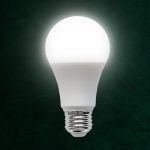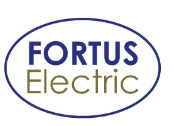Facts about LED lighting:
What is LED Lighting?
- LED stands for “Light Emitting Diode”. An electrical current passes through a
 microchip, which illuminates tiny light sources known as LEDs to produce light.
microchip, which illuminates tiny light sources known as LEDs to produce light. - LED’s do not “burn out” but experience a reduction of brightness over time.
- The small size of LED’s allows for tremendous design innovation with unique
lighting usage opportunities. - Heat produced by LED’s use “heat sink” designs to dissipate heat into the
surrounding environment.
My LED bulbs flicker or hum. This article will help you understand why.
What makes LED’s different from incandescent lighting?
- LED’s emit light in a specific direction, unlike CFL’s or incandescent lighting. This means LED’s are more efficient than other forms of lighting.
- LED’s can easily be designed to produce different colors of light, including amber, green, red and blue.
- Because of their efficiency and color capabilities, LED’s are widely used as signal lights and specialty applications such as computer power buttons.
- Incandescent bulbs are much less efficient because they use electricity to heat a filament until it becomes white hot, resulting in 90% of their energy is being released as heat.
Save on your energy bill with these 25 tips
LED usage is growing steadily in the U.S. You should use LED lighting if you want to:
- Save money over time on your electricity bill.
- Install it and forget it. LED’s last a long, long time, up to 5 times longer than incandescent bulbs.
- LED bulbs are becoming more affordable. While still more expensive than incandescents, the price gap is closing quickly due to competition.
My LED bulbs flicker or hum. This article will help you understand why.
Let Fortus Electric help you with your lighting and electrical needs. Call us today for a free quote (336) 955-1023.
Other helpful articles from Fortus Electric.
Prepare for a safe Spring: Electrical Safety tips
Solar Power Lighting Solutions
